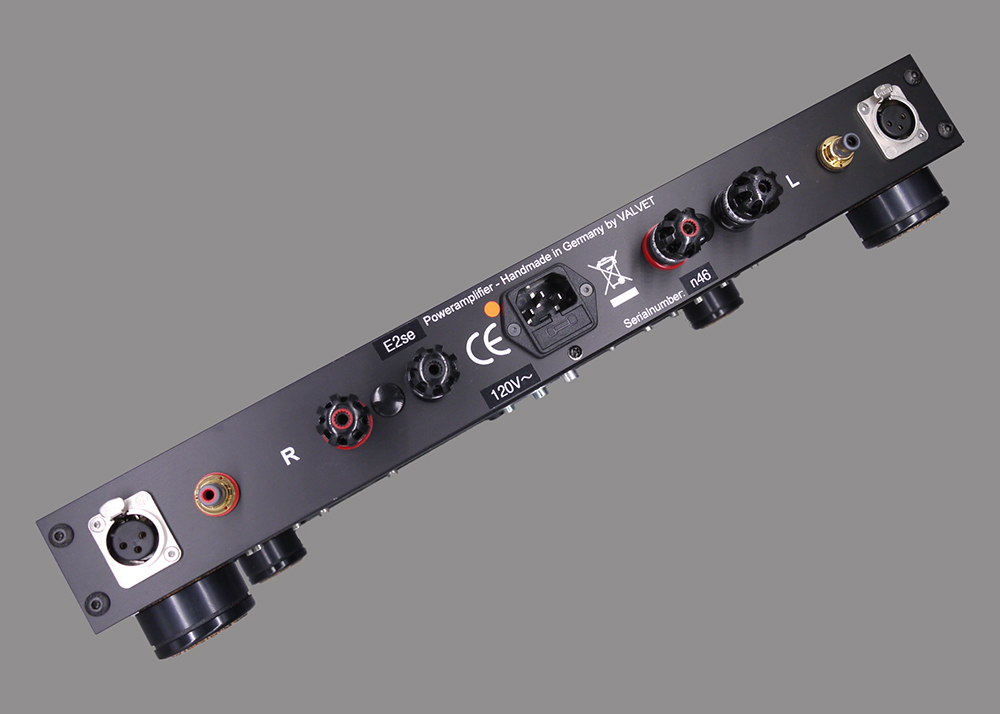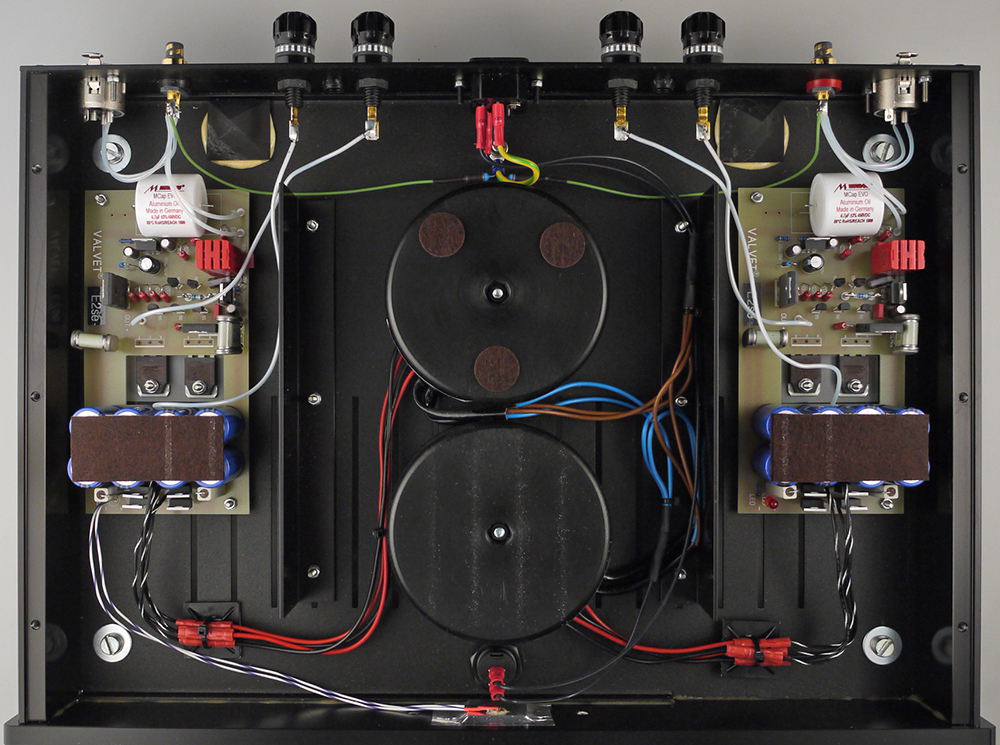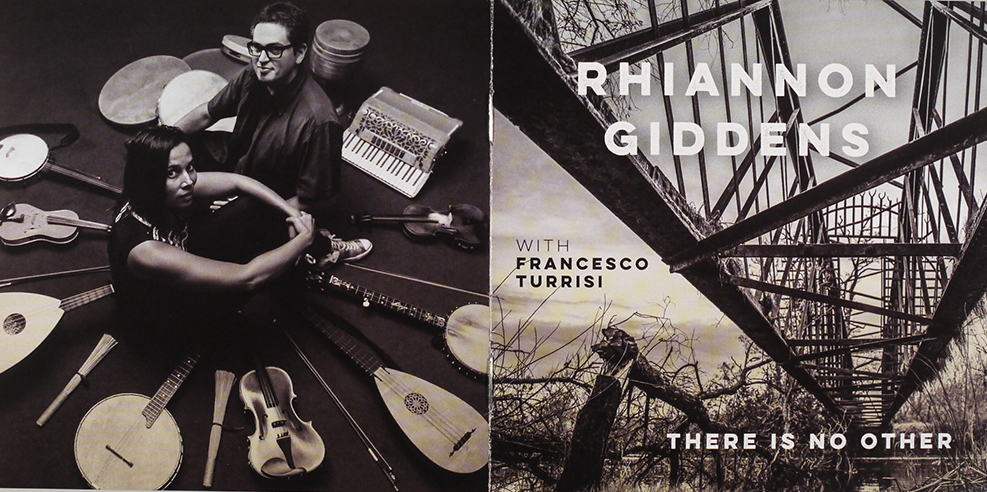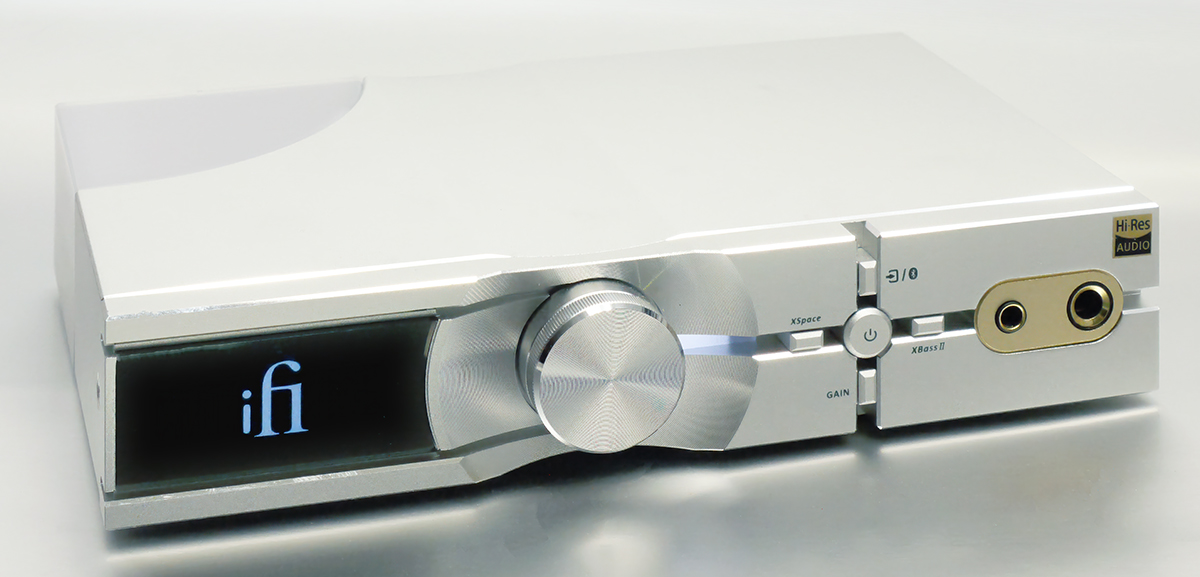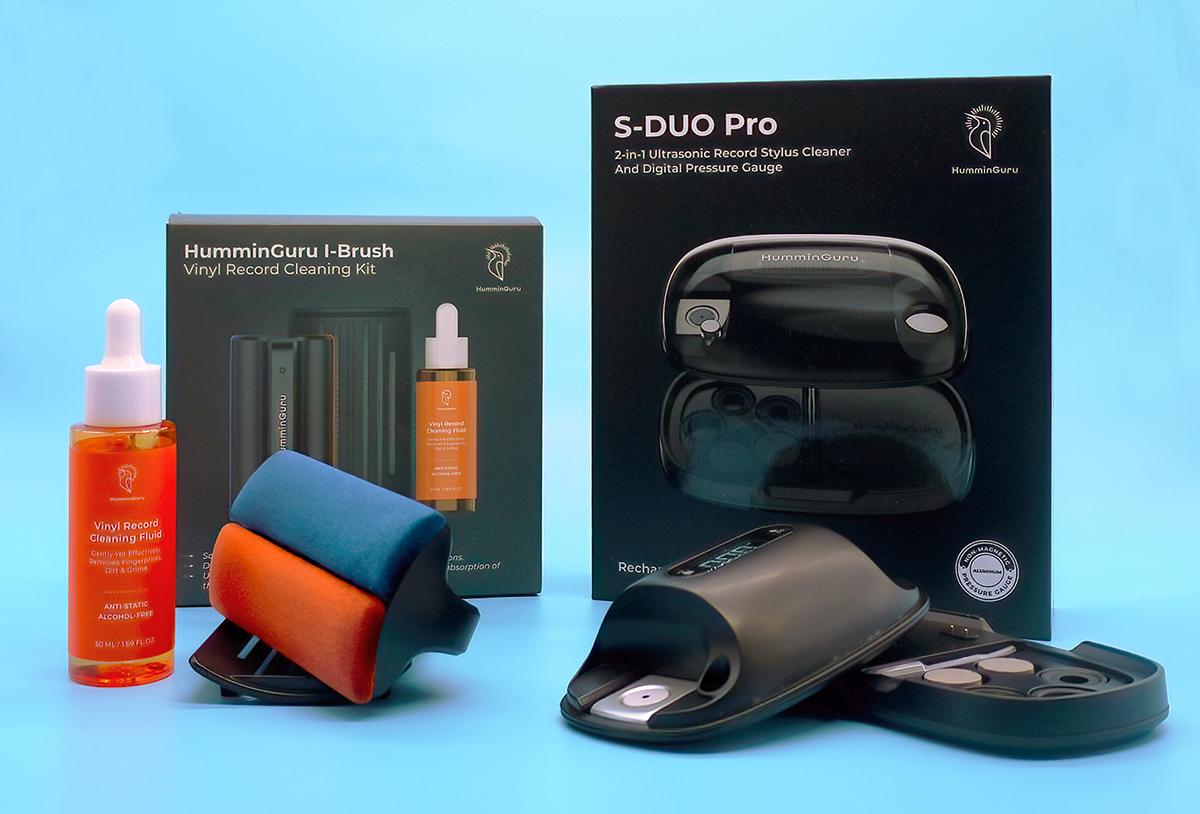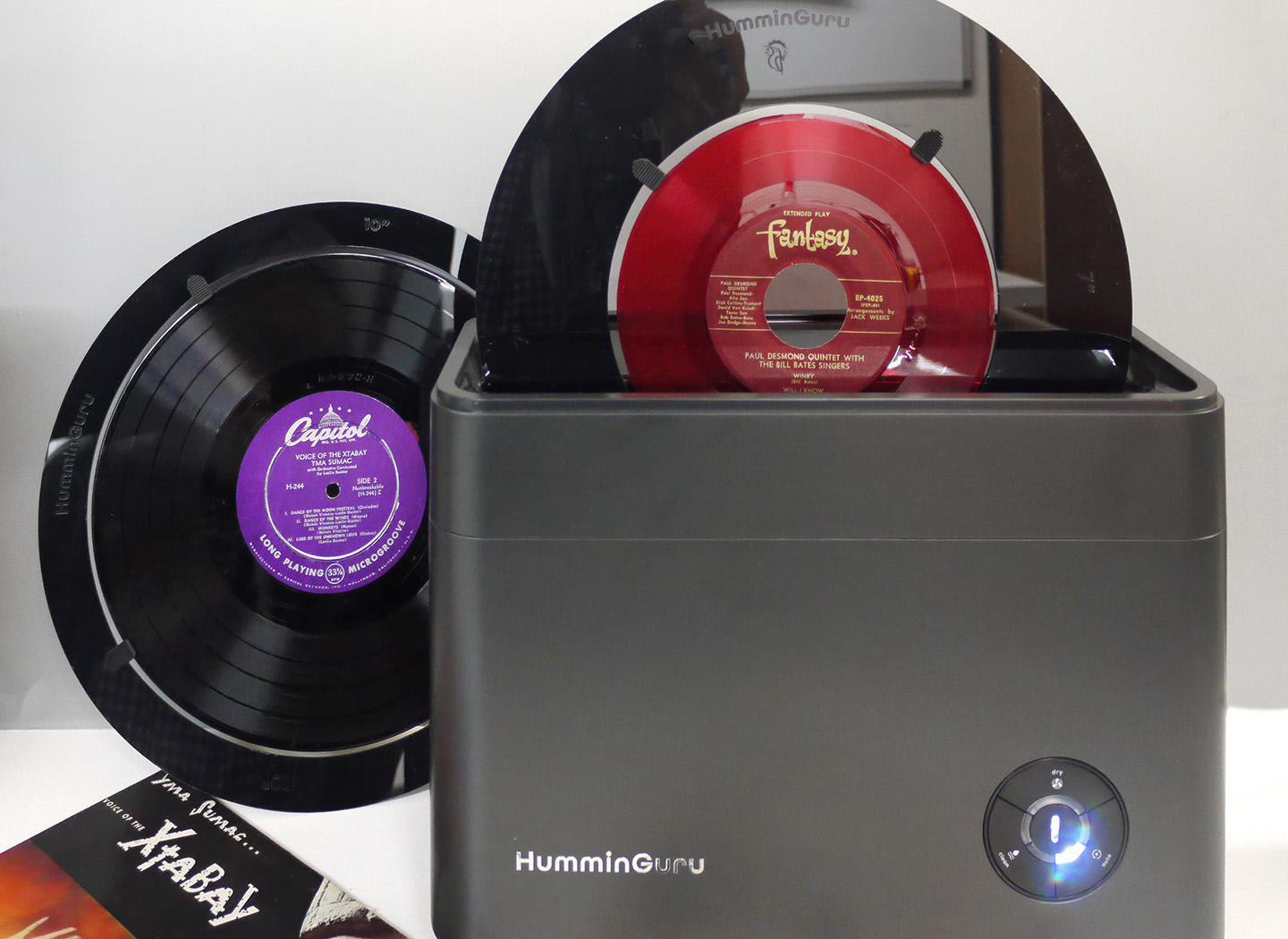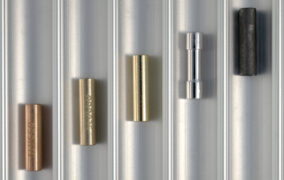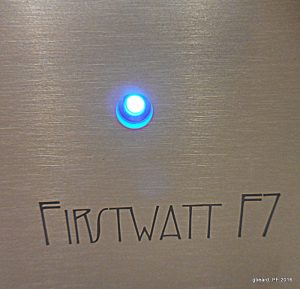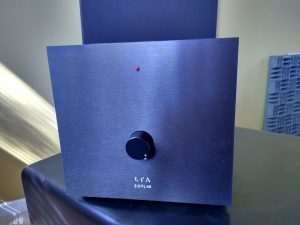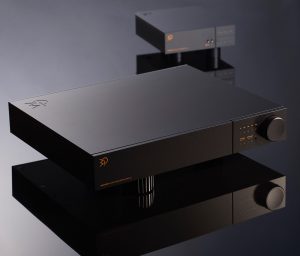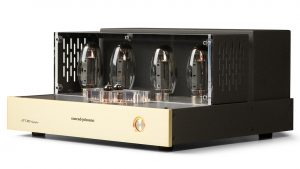OK. Given a world-wide pandemic, why are we reading (and writing) audio reviews?
First, as Congreve pointed out, "musick hath charms to sooth a savage breast."
Second, it's what we do, especially with time on our hands.
Up until a few years ago, I was active buying / selling vintage and audiophile LPs on eBay. Art College professors don't make the big bucks, and it was a congenial way to finance my parallel afflictions of serious photography and high-end audio. Many of my repeat buyers were overseas, from Asia and Europe and the UK, and a few became email pals.
One such was a Brit with whom I enjoyed some trans-Atlantic barter. No cash, no PayPal, just Blue Notes for FFSS Deccas, etc. We are still occasionally in touch. He's quite happy with his Tannoy, SME, and Sugden system (having moved on from a Linn, "valve" amps, and Quads). I heard from him after I reviewed my Spatial Hologram M4 Triode Master loudspeakers (HERE), which have high-frequency drivers concentrically positioned in the woofer ala Tannoy. He was not familiar with the Coincident Dynamo 34 SE MK II, the 8 wpc tube amp I mated them with, but was adamant that single-ended Class A solid state was the way to go with efficient speakers. He loves what his 10 wpc Sugden A-21 gets out of his vintage Tannoys.
Since then, and while I have been entirely pleased with the Coincident / Spatial combo in almost every respect, both have been replaced by new designs. The Mk III version of Israel Blume's Dynamo has been beefed up, sports two inputs, and can be had with 300Bs as well as EL34s. Spatial's Clayton Shaw has moved away from the full-range dipole concept in the new M Sapphire series. I'm sure they sound great and are even "better," but maybe not in my odd little room.
So, last fall I heard again from Tannoy Tommy. He was a little freaked over Brexit, as he does business in the EU. He's also in touch with the HiFi scene there, and was quite keen on something called the VALVET E2se, has anybody I know heard it Stateside? Way off my radar, so I go ask the Google. Unfortunately, it thought "Valvet" was a Kohler faucet part. "Valvet amplifier" immediately led the autocorrect algorithms astray. And our German VALVET is not even related to this German Valvet, apparently.
I persisted, the Google did respond to "Valvet preamplifier," and led me to the German site. From there I clicked the link to the US importer, and got the skinny in an email from Alfred Kainz of highend-electronics, inc., in California. The E2se replaces the E2, is still hand-built in Germany, and still dual-mono (two toroidal transformers, sharing one box and AC cord), single-ended Class A, 12 watts into 8 ohms (20 into 4 Ohms). And still minimal circuitry, silver internal wiring, only one output transistor per channel. However, the new version has upgraded Mundorf MCap Evo Oil capacitors, better spec resistors, and premium WBT RCAs and binding posts, plus Neutrik XLRs. Op-amps used in the E2 have been replaced with discrete circuits. Alfred was not familiar with my Spatial loudspeakers, but with them being 92dB efficient, felt it was worth a listen—he had been surprised at the range of loudspeakers that worked well with the E2-and agreed to send me one.
While waiting for the VALVET to arrive, I tried to figure out how to pronounce the unfamiliar name-were the "v's" pronounced like (f)olks(v)agen? No, explained Alfred, it is just a German/English mash-up (think Fahrvergnügen) of "valve" and "velvet," and pronounced that way. Easier than SoTM or Qobuz, actually. "Valve" in the Queen's English means what we Yanks call a vacuum tube, of course, and the Royals do have a weakness for velvet.
Using Chrome and/or Google Translate on the German site's "Informationen" pages allows the curious the chance to reconstruct something of the firm's history and products. Founded in 1991 near Hamburg by owner / designer Knut Cornils, VALVET has always had a limited product line, each offering evolving over time from previous iterations. The E1 (circa 1996) amplifiers were actually narrow but deep mono-blocks, as were the E1r amps that followed, but the E2 model combined the works (and dual power supplies) into one slimline chassis. Like the E2se's, these all were minimalist single-ended Class A, 10-12 watts into 8 ohms. The VALVET L2 line stage and PS2 phono preamplifiers seem to utilize the same basic casework as the E2se, with the tubes (yes! VALVET!) installed horizontally. The top of the line Soulshine2 MK II preamp puts dual mono power supplies in a matching flat chassis.
VALVET has described that chassis style as "bricks" (a better translation might be "pavers", like our ubiquitous 16" x 16" x 2" patio stones) as opposed to the chunky, half-standard-audio-rack-wide "blocks" used for their more powerful A series of push-pull Class A mono-blocks, with outputs in the 55-65 watts range. They are now up to the A4MKII and A4e, the latter with an outboard power supply. Robert Learner reviewed the A3.5 and the original Soulshine for Positive Feedback HERE, back in 2010. If you read the review and took his closing advice to "park them on your rack for the next ten years and find other things to worry about," this review won't sound unfamiliar.
We are now those ten years on. The VALVET 2se arrived last Christmas Eve, and was promptly unpacked and plucked from its ample bed of foam cushioning. If your idea of fine German industrial design runs toward the Leica / Festool / Mercedes Benz paradigm, you may feel ein bisschen disappointed. There is little external evidence about the E2se to suggest reference class performance lurks within. It is not carved from a single billet of unobtanium, the faceplate has no massive handles, meters, nor even a power switch. There are no flesh-searing heatsinks, and you don't even have to recruit an extra body to move it.
It is paver-sized at 17 1/2" x 13 1/2" x 3" (including feet and connectors), and heavier than it looks at 16.4 lbs, mostly due to the dual toroidal transformers that barely fit in the chassis. I think of it as echt Bauhaus form-follows-function severe, the only decorative concession being the bold "V" milled out on the faceplate. I prefer the brushed black of my sample's faceplate over the pictures of the brushed aluminum alternative, but neither looks "sexy" or "luxe" enough to command a cover of TAS. If the latter is of concern, chrome or polished brass faceplates are available on special order for an upcharge. If the former, be assured that feeling up and around below the coyly inviting V for the little hidden…no…no…YES! turn-me-on button leaves that V-slot all aglow-it comes in colors, actually: choose red, green, white, or blue when you order.
Yes, silver WBT RCAs can also be ordered instead of the standard copper for a upcharge. No, the VALVET E2se is not balanced; the XLRs are there for owner convenience, or for installations where noise or other factors might indicate balanced cabling. The power fuse is fitted below the IEC input. For USA and Canadian customers, the North American distributor installs a Synergistic Research Orange fuse at no added cost. Although the manual I received specifies a 2A, it also assures us that the E2se can provide plenty of current. Alfred Kainz says it should be at least 2.5A, and he installs 3.15A because he has found audiophile fuses tend to be sensitive to inrush current.
The slot-perforated top cover panel is fixed to the 12mm thick side panels by six 2mm Allen head bolts, but not to the faceplate or the thin back panel, which thus can flex a bit when inserting / removing heavy or tight cabling. This may be to accommodate possible Class A heat expansion issues. Yes, the slightly textured top finish looks suspiciously like non-stick cookware, but driving my efficient speakers it only gets mildly warm. There are not even any heat sinks, although the side panels are grooved to increase radiating area, and the hot bits are apparently bolted to the bottom plate, which does get significantly warmer, although slot-perforations there do promote convection cooling. Unlike many Class A amps (or their tubed brethren), the VALVET can be be installed in a conventional audio rack as long as 4" of side and top breathing room is provided. The manual advises against rapid on/off cycles, that it takes about 20-30 minutes to reach optimum performance, and that it can simply be left on, but cautions there may be utility bill consequences. I kept it on except to experiment with power cables, etc., then off overnight. I ended up preferring it with the Coincident Statement ST-10 power cord straight into a Furutech outlet.
Popping the lid, you see the uncomplicated dual-mono layout: a central pair of 120VA German toroidal transformers separated by shields from the surprisingly small circuit boards. Fans of the 47Lab products will appreciate the short-path circuit minimization concept. You also see the Mundorf EVO caps, silver signal wiring, etc.—quality parts where they make a sonic difference. The transformers and the power supply capacitors are topped by some sort of felt-like pads, apparently to damp any top cover contact or vibration-as they barely fit within the 2" deep slim-line chassis. VALVET strongly recommends not stacking any components atop the E2se, of course.
The four feet are taller than usual, which may facilitate cooling, but they are actually complex multi-material audiophile isolation footers from Germany's bFly:
So if you've already subtracted the $159 Orange fuse from the $3990 MSRP, you can probably also factor out the immediate cost of upgrade footers du jour. Of course, if you happen to have a set of Stillpoints or whatever just lying around, the bFlys are bolted in place from inside the chassis. I would not swap in shorter footers, but you can place all sorts of things (audiophile approved or not) under the bFlys to increase air circulation.
When I first plugged the VALVET into my system, it sounded both vivid tonally and a tad flat dimensionally—but that's not unusual, I think of it as the audio equivalent of the New Car smell. Alfred Kainz suggested the "break in point is about 200 hours, but after around 50-70 you can already hear where it's going." I ran in the VALVET playing mono Blue Note CDs overnight through my Spendor LS3/5a's wired out of phase for a couple weeks, using the Dynamo by day. At about 100 hrs, the VALVET took over the main system. I liked where it was going. I wanted to go there.
Don't get me wrong. I still love the spunky little Dynamo. In fact, I'd go so far as to say it is as much fun to listen to as any amp around, certainly any under $2K. Just like Jeeps are fun too, but a 3-Series Bimmer satisfies on a whole different level. As does the VALVET, and you hear that immediately.
Mesmerizing is the term I kept coming back to—when I try to just play a single cut, I have to hear the whole album. Forget conversation, reading, swapping cables, and checking Facebook. Voices, instruments, ensembles all sound so…convincing. The VALVET 2se somehow makes it easy—often eerily essential—to simultaneously follow the interplay of multiple parts in any ensemble. There is zero grain, glare, or brightness one often gets from less capable amps straining to retrieve detail the VALVET offers up effortlessly. As a result, I realized I was listening at lower levels and still more drawn into the performance.
The VALVET E2se is dead quiet even with the 92 dB Spatials. It provides 21 dB of gain, a few dB's less than the Coincident Dynamo, so I had feared a potential problem with my Bent Audio TAP passive preamp, especially with less sensitive speakers like my Spendor LS3/5a. (It can be ordered with up to 30dB gain). However, the Chord Qutest DAC allows variable output levels, and I also exploit the +3dB gain from using XLR cables from my AQVOX phono stage, so this never became an issue, even with the circa 82 dB Spendors. The manual says the E2se can deliver plenty of current and is stable down to a 2 Ohm load, but regarding suitable speakers, it demurs: "Just trust your ears." Although the VALVET's 50kOhm input impedance is passive-pre friendly, the manual does urge keeping all cables as short as possible. Buffered or transformer passives (like mine) are less susceptible to problems than pure passives where the output impedance can vary with level. Although my system has a 6m run of Unique Innovation Technology interconnects to the VALVET and 3m of Tellurium Q Ultra Silver speaker cables, I heard no problems.
Because the VALVET preamps use tubes, I also spent several days feeding the VALVET through my now-vintage Herron Audio VTP-1 preamp, fitted out with NOS 6DJ8s and an Orange fuse. The result was simply gorgeous sound, albeit trading a bit of passive-pre transparency for a shade more dynamics and that "valve" glow. I suspect the 2se would partner well with any top-quality preamp or DAC with a volume control.
Audiophiles will debate what constitutes a Reference Quality amplifier. If one needs the ability to drive any speaker to lease-breaking levels, with room shaking bass and glass-shattering highs, one obviously looks elsewhere. Low-powered single-ended Class A amps are all about tone and resolution, and require careful system matching, not just at the speaker end, but throughout the chain. Loudness aside, a Reference Quality amp has to be able to reveal—without comment—the sonic character of every element in that chain, all while just sounding like music.
An audio signal has three main properties: frequency, volume, and phase. The first two are easy; even the miniature speakers of a smart phone can convey melody, lyrics, rhythm, and a sense of dynamics. Lateral imaging between stereo speakers is primarily about relative volume left and right—that's what a balance control controls. But phase? Over the years, I've come to suspect that many of the the audiophile niceties we pursue in Reference Quality gear: a true 3D soundstage (imaging outside the loudspeakers, plus depth and height); accurate instrumental tone, timbre, and touch; microdynamics, emotion and expression; ambient hall sound, PRaT, transient attack and decay, etc.—and often just think of as "higher resolution"—are rooted in the reproduction of music's phase properties.
Do I have any technical evidence of this? Not really, but isn't "correct phase" the rationale behind full-range, time-aligned and concentric speaker drivers, different crossover characteristics, much of cable design, DAC filters, etc? It's basically the difference we hear in spatial representation from single point, spaced, and pan-potted multiple microphone recordings. Phase manipulations gave us quad, Dolby Surround, Q Sound, image expanders, etc. Your subwoofer probably has a knob to match its phase to the main speakers, or a switch to at least get close.
I mention this here because the remote on my Bent Audio TAP line stage has a phase invert button. It flips the "absolute polarity" of the signal: does the driver move forward or back in response to a positive voltage? It turns out that there is no standard "polarity" for recordings, but the "wrong" polarity can be audible as a "muffling" of micro-transients that give music lifelike texture. (I learned about polarity at the feet of the Master, longtime Positive Feedback contributor and onetime fellow Bostonian Clark Johnsen—who wrote the book on polarity.) If your preamp (or DAC) doesn't have a phase / invert switch (and the VALVET pre apparently don't), you can experiment by reversing the leads on both loudspeakers—Miles' muted trumpet is a good place to start.
So I have often used the phase invert switch over the years, but when I realized I was flipping it more frequently while listening to the VALVET, I emailed Alfred Kainz to ask if perchance the amp inverted phase (as some components do). He says no, but regardless: in my system, correct / inverted phase is more obvious with the VALVET than my other amps.
Phase faithfulness then might in part explain why the VALVET 2se excels at providing all those elusive "audiophile niceties" mentioned above, and why it meets my criteria of a Reference Quality component. A device operating in Class A is always "on," avoiding the zero-crossing transitions of push/pull designs, and using only one output transistor per channel eliminates parts-matching errors, however small. The penalty paid is, of course, limited power output. Done right, the benefit is clean, smooth, spacious sound-providing the the rest of the system is up to snuff. Mine is quite modest by high-end standards, but fast, quiet, and musical. The VALVET 2se might be a bit upmarket for the rest of my gear, but jeez, a Reference Quality amp should cost more than a few feet of audiophile cable.
When I say the VALVET brings out my inner imaging freak, I should give a couple of examples. Classical music is usually miked from a distance; the ensemble should thus image behind the plane of the speakers, and the recording convey a coherent sense of the "hall sound." This is also true of studio recordings wherein the musicians perform "live" together. I've been a forever fan of the Persuasions, and most audiophiles will have heard their four-on-four Beatles tribute featuring Chesky's trademark single stereo microphone in a spacious church acoustic. It sounds fantastic with the VALVET, no surprise. But I will instead direct your attention to Frankly A Capella. (Fun Fact—this guy plays a rough demo tape of some unknown Bed-Stuy singers for Frank Zappa-over the telephone, and he releases their first album in 1970). As a studio recording, Frankly not in the same league as the Chesky, but it's a fun ride even if you're not a fervid Zappatista. One expects a good system to allow the listener a sense of the recording venue, but from the beginning of "Lumpy Gravy," the VALVET unambiguously lets you hear the studio wall behind your listening chair (that is, until Jimmy and Jayotis end the album from inside the piano…)
Most modern pop recordings are assembled from multiple parts, sometimes from multiple studios, the soundstage created in the "mix." Take a CD everyone's heard aplenty: Norah Jones' Come Away with Me. If you haven't already consigned it to Goodwill (where I got my two copies), it's a handy system check. Norah's breathy voice can sound a bit rough on some systems, but with the VALVET, it's as smoothly textured as, well, velvet. Much of the instrumentation images in front of the speakers, her voice and drums behind the plane. On "Nightingale," there is a guitar solo that suddenly appears well outside, above, and forward of the right speaker. In the next track, "The Nearness of You," a similar guitar break floats out around the left speaker. Can't miss it…unless it doesn't.
Of course, I'm not suggesting the VALVET does 2-channel surround, only that when subtle spatial information is present in a recording, the 2se doesn't degrade it in the slightest; I've heard lots of equipment that can't pass these easy tests, and the VALVET aces them.
One of the easiest ways to empty a room at an audio show is to play some classical music, but I've still always been surprised how few audiophiles are drawn to "modern" classical music, even when that music's concerns with sonority, space, dynamics, and technology parallel their interests. So I was delighted to see Stereophile's Jason Victor Serinus recommend this disc of music by Finnish composer Kaija Saariaho a couple months ago.
He wrote mostly about True Fire, for Baritone and Orchestra; I had preordered the disc immediately after hearing Andris Nelsons and the BSO present Ciel d'hiver (Winter Sky) last year, and have since become enamored with her Trans for Harp and Orchestra. The VALVET's ability to unravel and balance complex lines seems ideal for this music; Ciel d'hiver becomes a ballet for aurora borealis, the harp concerto like a series of jazz improvisations in deep orchestral space.
The VALVET E2se is simply the most addicting yet almost affordable amplifier I've heard in my system, and one of the best amps I've heard, period. It's not one size fits all, but if, like me, you have or are downsizing to a smaller room, prefer accurate and efficient loudspeakers, and can couple it with high-resolution sources and cabling, the VALVET E2se is going to be a great fit.
There are of course several elephants in the room.
First, why even consider an imported amplifier when there is a choice of excellent Class A power amps from First Watt / Pass Labs and several others in the price range? Nelson Pass is a great designer, but each First Watt product is a different design-and sounds different, too. The VALVET 2se is a unique purist design evolved and refined over many years, featuring premium parts. Different philosophy.
Second, nearly $4000 for only 10-20 wpc, when you can easily get 10x the watts for less money? Or should it be: Really, only $4000?, because you can easily pay a lot more for 10-20 really good watts elsewhere? Right now many folks might not be able to pony up $4K until they've checked their 401K. But if your immediate future features a lot of quiet evenings at home, and you are going to cancel that vacation cruise anyway…
Third, no one knows where the very small world of high-end audio will be 3, 6, 12 months down the road, and so perhaps one should wait? But the economic reality is that many companies, large and small (including perfectionist electronics firms and their parts suppliers) may not survive post-plague. Frankly, if you had been thinking about buying anything audio, it's just a good time to support the industry.
So to echo Robert Learner above, the VALVET 2se is a 10-year product, and while I have other things to worry about, it stays.
Ooops! Almost forgot: you can't do an audio equipment review without a featured female vocal.
Rhiannon Giddens' There Is No Other is not a bad choice in these dark times, many of the songs rooted in loss and struggle. For me, her direct and eloquent alto can evoke echoes of early Joan Baez and Odetta in traditional fare like "Wayfaring Stranger" and "Little Margaret," but her originals have a timeless resonance too. Giddens mostly plays a minstrel banjo, the fretless, low-pitched and gut-strung precursor of the modern 5-string. Her partner Francesco Turrisi adeptly supports her with a variety of instruments, from accordion, lute, and piano to daf, tamburello, colascione, bendir and tombak. Don't ask, listen. The audio-show demo is probably her take on Mennotti's "Black Swan," but she ends the disc with "He will See You Through"...
When you think the world's gone crazy
He will see you through
When it looks like the end of days he'll
Surely see you through
E2se Stereo Power Amplifier
Retail: $3990
VALVET
https://highend-electronics.com






